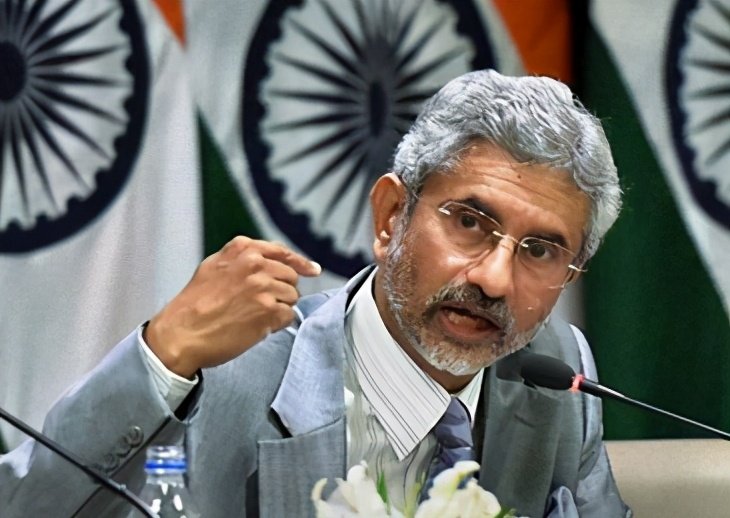India has long been struggling with the lack of strategic deterrence measures against the entire territory of China. This kind of anxiety is particularly prominent after the continued conflict in the border area between China and India in 2020. “New India Express” stated on the 4th that India’s “Agni-V” intercontinental missile with the longest range and attack range covering the entire Asia and half of Europe is about to enter service.
This means that India will join the “Intercontinental Missile Elite Club” and become the world’s No. Eight countries with intercontinental strike capabilities.
Chinese factors speed up the service of “Agni-V “
According to reports, in the past three months, India has successfully launched as many as 30 various missiles. “In 2021, India will deploy the’Agni-V’ ballistic missile with the longest range and the most nuclear deterrent.” This ballistic missile with a range of more than 5,000 kilometers makes India the 8th country in the world with intercontinental strike capability.
Indian defense strategy analysts had previously planned to put the Agni-V missile into service as soon as possible, and “China’s actions on the actual line of control” accelerated this process.
A source from the Indian Ministry of Defense said that this kind of self-developed, “game-changing” missile is undergoing pre-deployment testing and will be deployed to a strategic location selected by the Indian army.
India’s “SwarajyaMag” website stated on the 5th that, unlike the open-air display in the previous test launch or military parade, the officially deployed “Agni-V” intercontinental missile is placed in the launch tube and carried by a heavy-duty transport-launcher, which can be carried on the road. Quickly maneuver.
This state-of-the-art ballistic missile deployment method not only simplifies missile maintenance and pre-launch preparations, but also provides the necessary operational flexibility for the Indian army. It can be quickly transferred in a short time and avoid continuous tracking and attack by potential opponents. .
An Indian military source also revealed: “The delivery of this missile has already begun and mass production is currently underway. It will be officially deployed in the next 3-4 months and is now entering the final test before deployment.
The deployment of the missile will Paving the way for the development of more long-range missiles, which are in the design and development stage.”
How big is the threat
According to the New India Express, the Agni-V is powered by a three-stage solid fuel rocket. It has a total length of 17 meters and a weight of 50 tons. It can carry a 1.5-ton warhead and has a maximum range of more than 5,000 kilometers, which is enough to cover the entire region of Asia. Half of Europe. It is called “the symbol of technological excellence of the Indian Defense Research and Development Organization”.
It is equipped with a high-precision inertial navigation system based on a ring laser gyro and a miniature inertial navigation system composed of small avionics, which has a fairly high hit accuracy. In addition, the Indian military is also testing a series of new technologies, including the Multiple Independent Target Reentry Vehicle (MIRV), which allows multiple sub-warheads carried by intercontinental missiles to fly to different targets hundreds of kilometers apart, greatly increasing The difficulty of the opponent’s interception.
However, a Chinese expert interviewed by the Global Times said that India’s definition of “intercontinental missile” has long puzzled the outside world. According to international practice, the range of the intercontinental missile should be more than 8,000 kilometers, and the actual range of the “Agni-V” has not exceeded 5,000 kilometers in multiple flight tests since 2012.
The official statement of the Defense Research and Development Organization of India admitted that the missile has a range of about 5,000 kilometers, and the planned “Agni-VI” intercontinental missile has a maximum range of 8,000 kilometers.
The Indian media mentioned that “India has become the eighth country in the world with intercontinental missiles.” It is very likely that 5,000 kilometers will also be used as the yardstick for intercontinental missiles. Previously, apart from the United States, Russia, Britain, France and China, only North Korea and Israel have tested a range of 5,000. Kilometers of ballistic missiles.
Experts say that the Agni-V is not advanced from an overall level. For example, in terms of key indicators, the US-Russian solid-fuel intercontinental missile weighs only about 40 tons, but it is enough to strike targets 10,000 kilometers away.
“Agni-V” opened a technological gap for decades. However, the “Agni-V” gave India the ability to strike across China for the first time. Coupled with the road-maneuver deployment mode of the missile, it has greatly enhanced India’s strategic deterrence capability. It should be said that it deserves our attention.
The second strategic nuclear submarine is about to enter service
In addition to stepping up the deployment of the “Agni-V” intercontinental missile, India’s “ThePrint” website stated on the 5th that the second strategic nuclear submarine of the Indian Navy is also expected to enter service early this year. According to reports, the nuclear submarine has a displacement of about 6,000 tons and is currently undergoing final sea trials.
After it enters service, India will have two strategic nuclear submarines each carrying four K-15 submarine-launched ballistic missiles with a range of 750 kilometers. They will launch a second nuclear counterattack when India is under a nuclear attack. In addition, India also plans to continue to build two strategic nuclear submarines with larger tonnage and capable of carrying more missiles.
Although neither the Indian nuclear submarine itself nor the submarine-launched ballistic missiles it carries can be compared with similar weapons of nuclear powers, the report still preaches that in 2018, India’s strategic nuclear submarine officially began underwater cruises, and India has thus gained access from land.
The “Trinity” nuclear strike capability of launching nuclear weapons in the air and underwater was previously only possessed by the United States, Russia and China.



